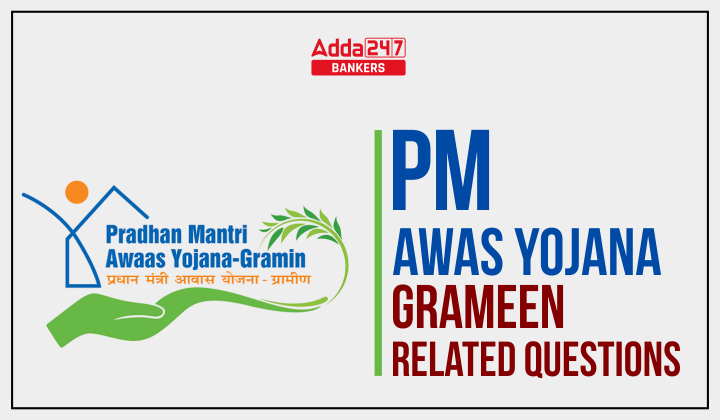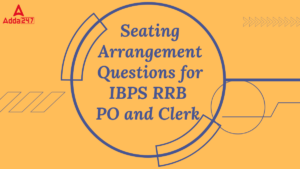Table of Contents
PM Awas Yojana- Gramin why in news?
On the occasion of Dhanteras, Prime Minister Shri Narendra Modi will participate in ‘Griha Pravesham’ of about 4.51 Lakh beneficiaries of Pradhan Mantri Awaas Yojana – Gramin in Satna, Madhya Pradesh on 22nd October
Achievement of PM Awas Yojana- Grameen
Under PMAY-G, out of the total targets allocated to the States/UTs till date, 2.44 crore houses have been sanctioned by the states/UTs and 1.89 crore have been completed as on 21.07.2022.
History of PM Awas Grameen Yojana
The PMAYG plan, which was first introduced in 1985 under the name “Indira Awaas Yojana,” underwent significant revisions and was reintroduced in 2016 by the present administration as a component of their “Housing for All by 2022” agenda. The PMAYG Mission will now continue until 2024.
What is the overall target of PMAY G?
The overall target to construct 2.95 crore pucca houses with basic amenities by March, 2024.
The Ministry of Rural Development has been releasing Central share of funds to States/UTs for implementation of PMAY-G since 2016 and a total of Rs.1,79,255.80 crore of Central share has been released to States/UTs till date.
What is the announcement for PMAY G in Union Budget 2022-23?
- In the Union Budget 2022-23, the finance minister requested that 80 lakh affordable residences be built and delivered by 2023. The Finance Minister also suggested allocating Rs 48,000 crore for delayed affordable housing projects nationwide. It will expedite building projects.
- The minimum size of the residences that are required to be developed as part of the PMAYG 2022-23 project has been raised to 25 square meters from 20 square meters as of the current time.
Which ministry is the implementing agency?
Ministry of Rural Development
What are the Features of the PMAY-G?
- PMAY-G aims at providing a pucca house, with basic amenities, to all houseless householder and those households living in kutcha and dilapidated house, by 2022.
- The immediate the objective is to cover 1.00 crore household living in kutcha house/dilapidated house in three years from 2016-17 to 2018- 19.
- The minimum size of the house has been increased to 25 sq.mt (from20sq.mt) with a hygienic cooking space.
- The unit assistance has been increased from Rs. 70,000 to Rs. 1.20 lakh in plain and from Rs75,000 to Rs 1.30 lakh in hilly states, difficult areas and IAP district.
- The beneficiary is entitled to 90.95 person day of unskilled labour from MGNREGS.
- The assistance for construction of toilet shall be leveraged though convergence with SBM-G, MGNREGS or any other dedicated the source of funding.
- Convergence for piped drinking water, electricity connection, LPG gas connection etc. different Government programmers are also to be attempted.
How the cost is shared between the central and state government?
- The cost of unit assistance is to be shared between Central and State Government in the ratio 60:40 in plain areas and 90:10 for North Eastern and the Himalayan States.
- From the annual budgetary grant for PMAY-G,90% of funds is to be released to States/UTs for the construction of new house under PMAY-G.
- This would also include 4% allocation towards Administrative expenses 0.5%of the budgetary grant is to be retained at the central Level as reserve found for special Projects.
- The annual allocation to the states is to be based on the Annual Action Plan (AAP) approved by the Empowered Committee and the found to States /UTs is to be released in tow equal installments.
How beneficiaries are selected under PMAY-G?
- The most important features of PMAY-G is the selection of beneficiary.
- To ensure that assistance is targeted at those who are genuinely deprived and that the selection is objective and verifiable, PMAY-G instead of selecting a the beneficiary from among the BPL households selects beneficiary using housing deprivation parameters in the Socio Economic and Caste Census (SECC), 2011 date which is to be verified by the Gram Sabhas.
- The SECC data captures specific deprivation related to housing among households.
- Using the data households that are houseless and living in 0,1 and 2 kutcha wall and kutcha roof houses can be segregated and targeted .
- The Permanent Wait List so generated also ensures that the states have the ready list of the household to be covered under the scheme in the coming years (through Annual Select Lists) leading to better planning of implementation. To adders grievances in beneficiary selection an appellate process has also been put in place.
How PMAY-G is monitored?
- In PMAY-G, programme implementation and monitoring is to be carried out through an end to end e-Governance model- Using AwaasSoft and Awaas App.
- AwaasApp-a the mobile application is to be used to monitor real time, evidence based progress of house construction through date and time stamped and georeferenced photographs of the house.
- All payments to beneficiary is to be through DBT to beneficiary’s Bank/post office accounts registered in Awaas SoftMIS.
Other posts
- General Awareness Quiz Series 2022: 19th October
-
Most Important Question Related to Nobel Prize For Bank Exams
- PM Modi Addressed 90th Interpol General Assembly in Pragati Maidan
| Current Affairs April 2022 | |




 GA Capsule for SBI Clerk Mains 2025, Dow...
GA Capsule for SBI Clerk Mains 2025, Dow...
 The Hindu Review October 2022: Download ...
The Hindu Review October 2022: Download ...
 Seating Arrangement Questions for IBPS R...
Seating Arrangement Questions for IBPS R...





